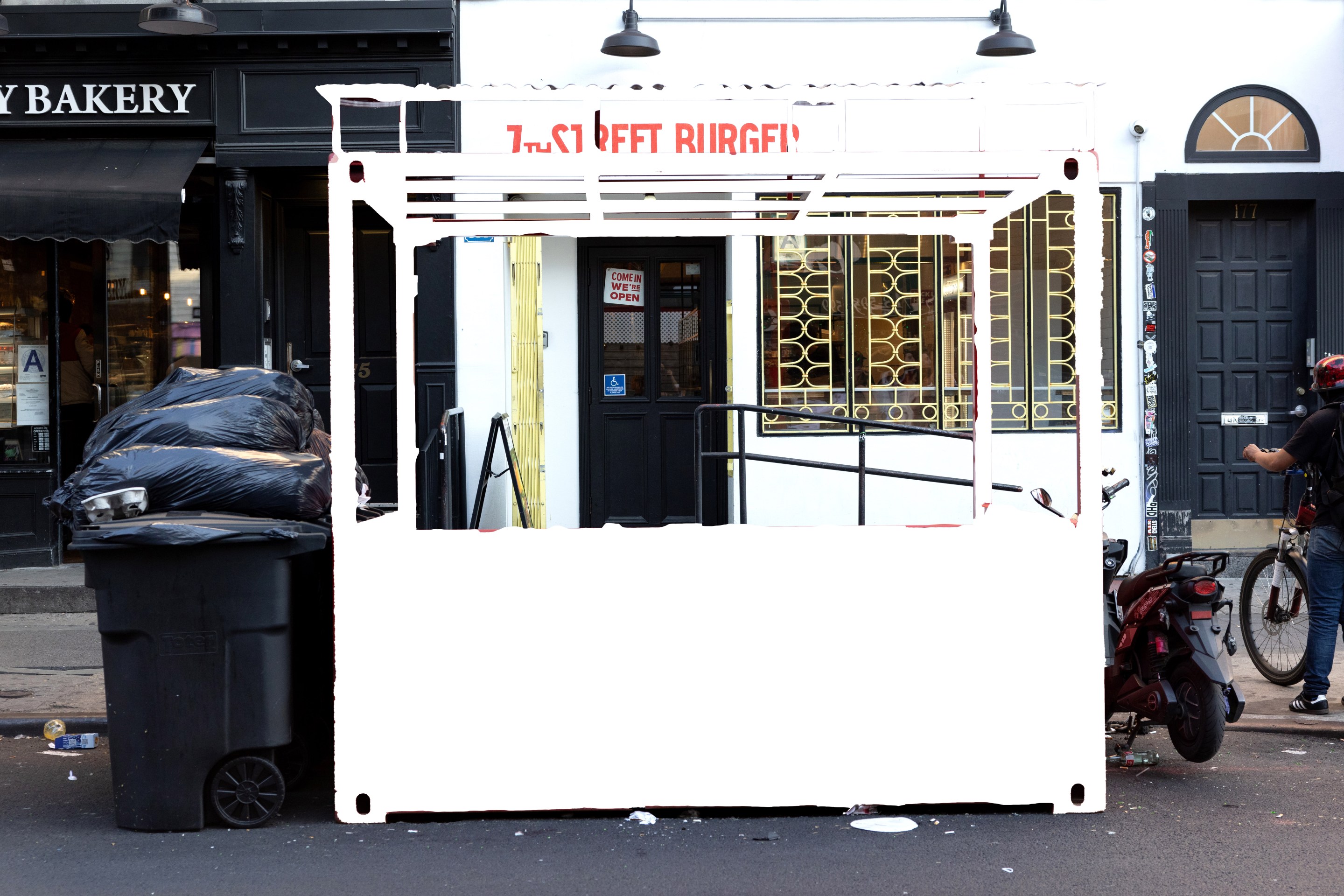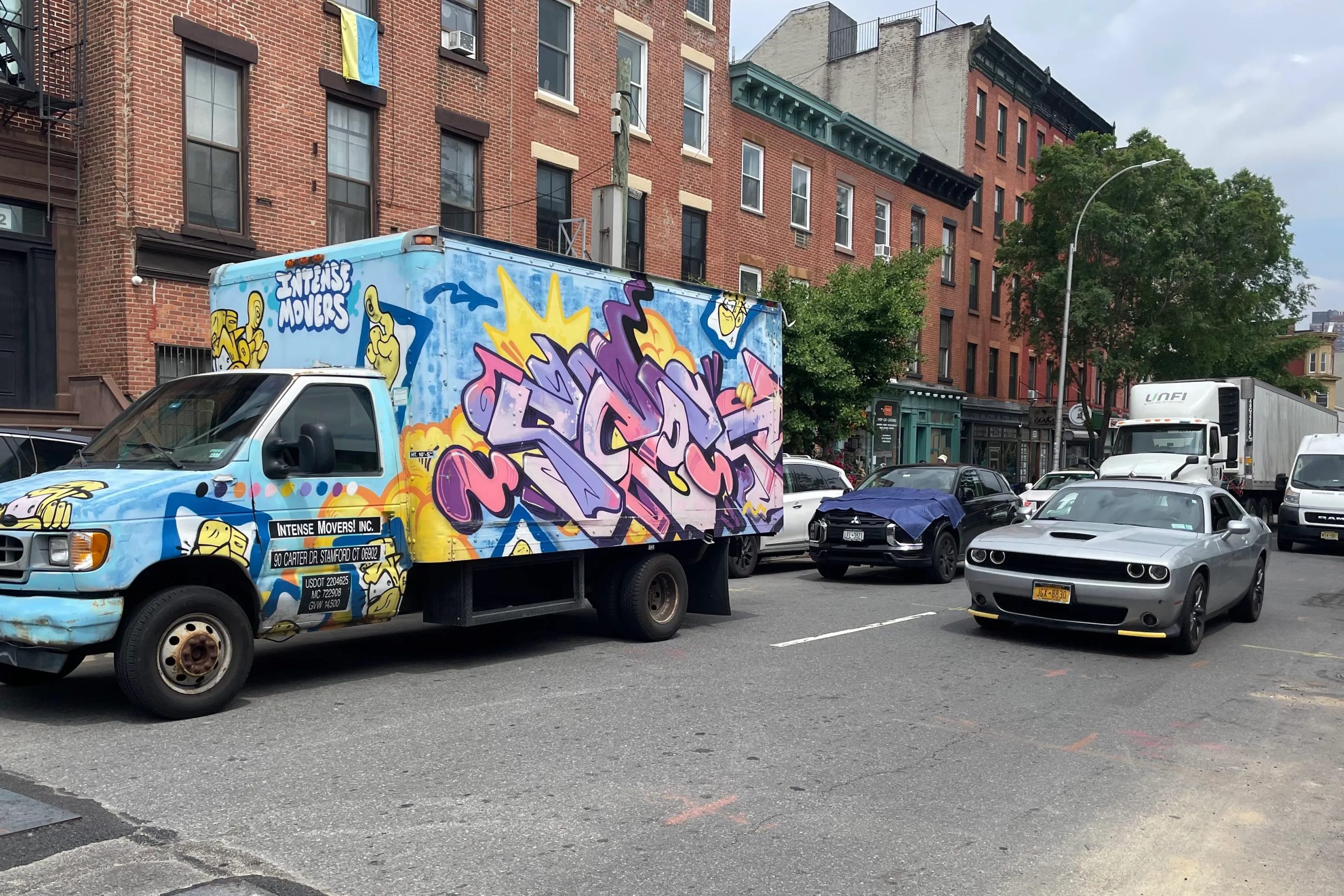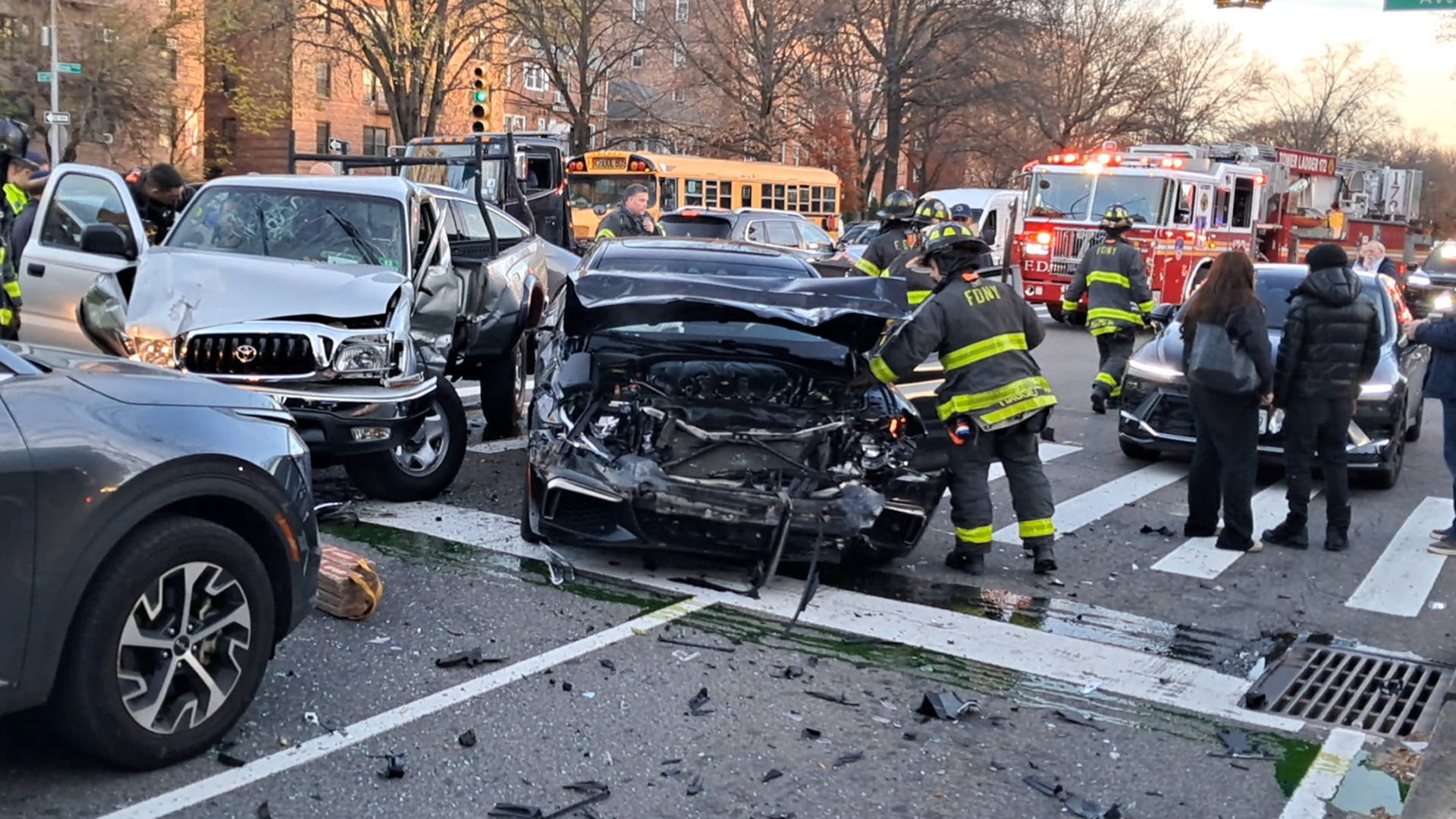Protect them and they will bike.
Cycling by women increased 4 to 6 percent on roadways where the city build protected bike lanes, a new study reveals, further bolstering previous findings that dangerous streets are a prime cause of the gender gap in cycling.
Cross-referencing Citi Bike ridership data with the city's bike infrastructure map, two European researchers found that the construction of protected bike lanes led to profound increases in bike riding by people identifying as female.
"Women's participation in cycling mainly increases for routes that are covered by at least 50 percent with protected bike lanes, and that the biggest uptake comes from routes for which more than 80 percent can be ridden on a protected cycling lane," authors Laila AitBihiOualia and Joris Klingen wrote in the study, published this week in Cities magazine. "Our findings imply that there are strong incentives for policymakers to invest in the implementation of dedicated bike lanes and especially to make sure that protected cycle paths represent a substantial share of routes."
Prior studies have shown that the main contributor to the "gender gap" in cycling — why male cyclists outnumber women by three to one — is basic perception of safety. Women do tend to perceive their personal safety differently from men, who are much more likely to engage in risk-taking behavior, and this perception tends to cross many different modes of transportation, including transit, bike and also walking or hanging out in public space.
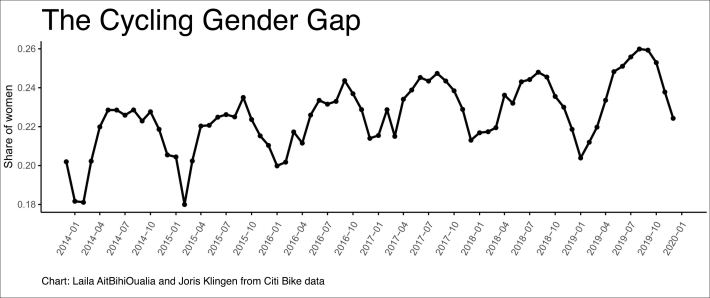
The authors of the study focused solely on cycling, which adds additional gendered factors, such as differing commuting needs of women vs. men, as well as household roles played by both (women tend to make shorter trips, often with children, for example). Women also tend to ride bikes less in the winter — again because of safety perception, the authors noted.
"There are mismatches between female safety needs and the implemented public transport strategies," the authors pointed out, by way of a jumping-off point.
Without question, the study of Citi Bike ridership data between 2013 and 2019 found that cycling by all riders increase when and where the city has built protected bike lanes. But, the authors quickly added, "We can infer that women's response is larger since the gender balance increases."
The implication is clear: The more women who start biking, the more women will join them in biking. And the more protected bike lanes, the better (see chart below).
"Women's larger response to the implementation of cycling infrastructure helps making roads more inclusive with women perceiving a smaller danger to their personal security when traveling by bike," the study said.
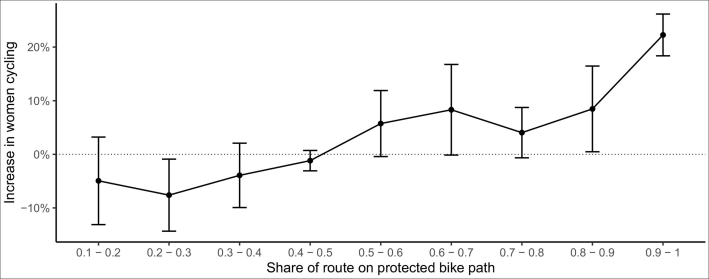
Of course, the impediments to female cycling are well documented in this hostile city dominated by male aggression. Roadways become yet another venue for female harassment and intimidation, as Streetsblog has reported. But safety remains central.
The report's findings echo what bike education leaders are experiencing on the ground.
"Every current and aspiring New York cyclist witnesses enough heinous auto aggression daily to give them serious pause about starting or continuing to use unprotected spaces," said Courtney Williams, aka The Brown Bike Girl, who added that most of the people who take her monthly navigation and skills classes are "women, femme, and non binary people."
"But since women socially conditioned against embodying the toughness needed to contend with a continuous volume of auto aggression, it's absolutely reasonable to conclude that creating more physically separated spaces where women don't imagine themselves at risk of verbal or physical altercation will lead to more women and femmes biking."
As such, Citi Bike reiterated that imperative for protections for their customers.
"The biggest barriers to getting more people on two wheels are a lack of protected, safe bicycling infrastructure and access to bikes," said Laura Fox, the general manager for Citi Bike at the bike-share system's parent company, Lyft. "This study validates that our efforts ... to tackle both of those head on are encouraging groups that were riding less — particularly women — to come out in greater numbers as a result."


